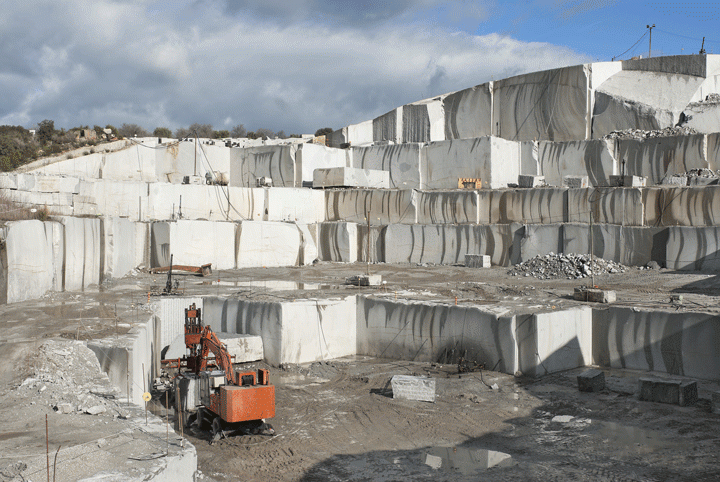Checking Out Granite Quarries in South Africa: A Comprehensive Overview
Checking Out Granite Quarries in South Africa: A Comprehensive Overview
Blog Article
Uncovering the Rich History and Lasting Practices of Granite Quarrying
As we depend on the precipice of uncovering the elaborate tapestry of granite quarrying, a journey with time exposes not simply the physical act of extracting stone however additionally the cultural and historic significance woven into the very textile of this practice. From the ancient beginnings that laid the foundation for modern quarrying techniques to the lasting practices that are shaping the future of this sector, each sculpt mark on granite surfaces narrates waiting to be discovered (granite quarries in south africa). The legacy of granite quarrying stretches far beyond simple removal; it is a testimony to human resourcefulness, strength, and the long-lasting attraction of this majestic stone
Old Origins of Granite Quarrying
Going back to ancient civilizations, the method of quarrying granite has been an indispensable part of human background and building innovation. The earliest evidence of granite quarrying days back to old Egypt, where massive pyramids and intricate sculptures were crafted from this resilient rock. The Egyptians utilized primitive tools to extract granite blocks from quarries, showcasing the importance of this material in their monumental constructions.
Moving onward in history, the Greeks also made considerable payments to the quarrying of granite. The Greeks used granite in numerous building wonders, such as holy places and statuaries, demonstrating their skill in shaping and sculpting this sturdy rock. The Romans better fine-tuned the strategies of quarrying granite, using sophisticated tools like knives and hammers to extract and shape granite for their famous structures.
Via the centuries, the practice of quarrying granite has advanced, with modern technologies improving effectiveness while keeping the ageless allure of this all-natural stone - granite quarries in south africa. From old civilizations to modern contractors, the heritage of granite quarrying remains to form our world
Development of Quarrying Strategies
The advancement of quarrying techniques has actually been marked by a continuous development towards higher efficiency and accuracy in extracting granite. Early quarrying methods involved hands-on labor with basic tools such as chisels, hammers, and wedges to extract granite blocks from the earth.
In more recent times, the arrival of equipment changed the quarrying sector, enabling quicker extraction prices and increased performance. Technologies such as ruby cord saws, high-pressure water jets, and pneumatic drills have ended up being typical in modern-day quarries, enabling specific cutting and lowered waste. Improvements in computer-controlled tools and 3D modeling have optimized quarrying operations, leading to marginal environmental impact and improved sustainability techniques. As the need for granite proceeds to climb, the evolution of quarrying techniques remains important to conference market requires successfully and sustainably.
Social Significance of Granite
Granite holds a profound social relevance across numerous people because of its enduring presence in building masterpieces and prized monoliths. From the impressive pyramids of Egypt to the elaborate makings of the Angkor Wat holy place in Cambodia, granite has been a material of choice for sharing magnificence and durability in social heritage. In ancient Rome, granite columns adorned holy places and public structures, representing toughness and durability. The cultural value of granite prolongs beyond its physical attributes; it personifies strength, stability, and eternity, making it a sign of enduring traditions and traditions.

Lasting Practices in Quarrying
In the middle of the rich history of granite quarrying and its social relevance exists a growing focus on lasting methods within the market. As ecological recognition and problems concerning resource deficiency have enhanced around the world, the quarrying market has progressively embraced lasting methods to decrease its effect on the atmosphere and bordering areas.

Additionally, improvement and rehab of quarry sites post-extraction are important to lasting techniques. By restoring quarried areas to an all-natural or valuable state, such as creating wildlife habitats or recreational rooms, quarriers can offset the environmental footprint of their procedures and add positively to the local ecosystem.
Legacy of Granite Quarrying
With a historic background steeped in craftsmanship and industrial progress, what sustaining influence has granite quarrying left on the landscape of contemporary society? The legacy of granite quarrying transcends plain removal techniques; it has shaped architectural marvels, urban landscapes, and cultural heritage worldwide. The long lasting More Help nature of visit our website granite has made it a favored selection for monuments, structures, and framework, standing as a testament to the skill and artistry of quarry employees throughout generations.
Moreover, the financial footprint of granite quarrying can not be ignored. The market continues to offer employment possibility and drive neighborhood economies in areas where granite removal prevails. It has likewise spurred technical innovations in quarrying methods and tools, bring about much more reliable and sustainable techniques.
In regards to sustainability, the tradition of granite quarrying consists of efforts to minimize ecological influences with recovery tasks and liable source administration. By balancing financial interests with environmental stewardship, the industry makes every effort to make sure that future generations can continue to benefit from this enduring all-natural resource.
Conclusion

Report this page